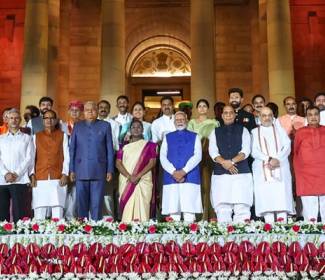Electronics are ubiquitous in our lives and are constant companions to our lifestyle choices. They are powered by the humble semiconductor, acting as the powerhouse of all electronics products we use today. Recently Union Cabinet under the visionary leadership of the Prime Minister approved Rs. 76000 Crore (~USD 10 Bn) incentive package, in the form of Semicon India Program for Development of Semiconductors and Display manufacturing ecosystem in India. It is a giant leap in the government’s tireless efforts to be self-reliant in the manufacturing of electronics goods. With this scheme in place, the government has effectively announced incentives for every component of the supply chain including semiconductor wafers, electronics components, sub-assemblies, and finished goods, thus setting India on course for becoming a global electronics manufacturing hub.
The Semicon India program is unique in listing incentives for the development of several key processes in the entire life cycle of semiconductor development which includes - research and design, wafer manufacturing, semiconductor packaging etc. For instance, the scheme for Setting up Semiconductor Fabs and Display Fabs in India aims to set up at least two greenfield semiconductor fabs and two display fabs in the country by extending fiscal support of up to 50 per cent of the project cost to eligible applicants. The scheme for Setting up Compound Semiconductors/Silicon Photonics/Sensors Fabs and Semiconductor ATMP/OSAT facilities in India are meant to fill crucial gaps in the semiconductor infrastructure ecosystem. The scheme aims to provide fiscal support of up to 30 per cent of the capital expenditure to approved units. The GoI, as well as the state governments, will hand-hold companies by facilitating access to requisite infrastructure such as land, semiconductor grade water, and a constant source of quality power. These fabs will provide microchips for our mobile phones, EVs, automobiles, telecom towers, and other electronics applications.
These incentives will help assuage the high risk and long gestation and payback periods that act as barriers of entry to the capital and technology-intensive sector of semiconductors and display manufacturing.
In order to build a conducive semiconductor design ecosystem, the Design Linked Incentive Scheme aims to provide product linked incentives of up to 50 per cent of the eligible expenditure and up to 6%-4% deployment linked incentives on the net sales, for 5 years. It also envisages developing a support infrastructure in the form of a National EDA grid, IP core repository, prototyping, and post-silicon validation. This will help facilitate the ambitious yet achievable goal of building not less than 20 such companies which can achieve a turnover of more than INR1500 crore within 5 years. The program has also outlaid financial mechanisms for the modernization and commercialization of the Semi-conductor Laboratory (SCL) located in Mohali, to take it to another level.
Finally, for the comprehensive and coherent execution of all these schemes under the program, the India Semiconductor Mission is envisaged to act as a specialized and independent mechanism to enable sustainable semiconductors and display ecosystem in the country. The mission will be helmed by stalwarts of the global semiconductor and display industry.
Overall, the program will keep India anchored in its path to meet both domestic demands for semiconductors which is growing at a CAGR of 15%, and domestic demand for the display market which is expected to grow three times to USD 19 billion by 2025. This will also enable India to cater to global markets which are reeling under the pressure of chip shortages and in turn extend its geopolitical appeal.
The program finds pride of place in the government’s slew of initiatives to build India into a global technological leader with a focus on strategic sectors such as electronics manufacturing. For instance, the Production Linked Incentive (PLIs), Scheme for promotion of Manufacturing of Electronic Components and Semiconductors (SPECS), and Electronics Manufacturing Clusters (EMC2.0) are enabling electronics manufacturing at different levels of the supply chain and offer a series of cascading incentives at different stages. Additionally, outlining the objectives and principles behind the drive for digital sovereignty is the National Policy on Electronics (NPE 2019) which envisages India as a global hub for electronics manufacturing.
Building on the success of ‘Digital India’ and ‘Make in India’, the Semicon India program is the comprehensive push for electronics manufacturing in India. It feeds into the government’s wider goal of economic self-reliance and the Prime Minister’s call for ‘Atmanirbhar Bharat’. The Semicon India Program will help propel innovation, encourage domestic capacity building, reduce dependence on imports, ensure strategic autonomy and help integrate into the global value chain. Promoting such significant domestic value addition in electronics manufacturing will help fast-track achieving India’s cherished goal of becoming a USD 1 trillion digital economy and a bustling USD 5 trillion economy by 2025.
This article is co-authored by Sagar Sharma and Urmi Tat.






